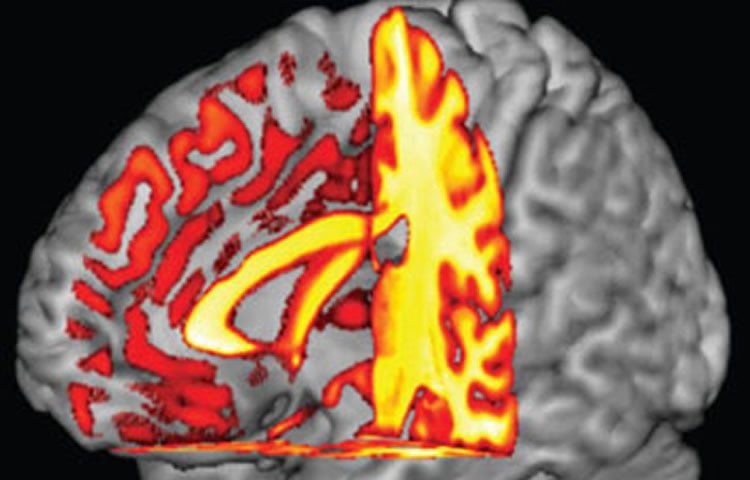A pioneering study conducted by leading researchers at the University of Sheffield has revealed blood types play a role in the development of the nervous system and may cause a higher risk of developing cognitive decline.
The research, carried out in collaboration with the IRCCS San Camillo Hospital Foundation in Venice, shows that people with an ‘O’ blood type have more grey matter in their brain, which helps to protect against diseases such as Alzheimer’s, than those with ‘A’, ‘B’ or ‘AB’ blood types.
Research fellow Matteo De Marco and Professor Annalena Venneri, from the University’s Department of Neuroscience, made the discovery after analysing the results of 189 Magnetic Resonance Imaging (MRI) scans from healthy volunteers.
The researchers calculated the volumes of grey matter within the brain and explored the differences between different blood types.
The results, published in The Brain Research Bulletin, show that individuals with an ‘O’ blood type have more grey matter in the posterior proportion of the cerebellum.
In comparison, those with ‘A’, ‘B’ or ‘AB’ blood types had smaller grey matter volumes in temporal and limbic regions of the brain, including the left hippocampus, which is one of the earliest part of the brain damaged by Alzheimer’s disease.
These findings indicate that smaller volumes of grey matter are associated with non-‘O’ blood types.
As we age a reduction of grey matter volumes is normally seen in the brain, but later in life this grey matter difference between blood types will intensify as a consequence of ageing.

“The findings seem to indicate that people who have an ‘O’ blood type are more protected against the diseases in which volumetric reduction is seen in temporal and mediotemporal regions of the brain like with Alzheimer’s disease for instance,” said Matteo DeMarco.
“However additional tests and further research are required as other biological mechanisms might be involved.”
Professor Annalena Venneri added: “What we know today is that a significant difference in volumes exists, and our findings confirm established clinical observations. In all likelihood the biology of blood types influences the development of the nervous system. We now have to understand how and why this occurs.”
Source: Amy Pullan – University of Sheffield
Image Credit: The image is credited to the researchers and is adapted from the press release
Original Research: Abstract for “‘O’ blood type is associated with larger grey-matter volumes in the cerebellum” by Matteo De Marco and Annalena Venneri in Brain Research Bulletin. Published online June 03 2015 doi:10.1016/j.brainresbull.2015.05.005
Abstract
‘O’ blood type is associated with larger grey-matter volumes in the cerebellum
Recent evidence indicated higher incidence of cognitive deficits in ABO blood-type system ‘AB’ individuals. Since this statistical difference might originate from the lack of protective effects exerted by ‘O’ alleles on the brain via vascular or non-vascular routes, this study investigated volumetric differences in grey matter between ‘O’ and non-‘O’ adults to explore the possibility of a structural endophenotype visible in ‘O’ adults without cognitive impairment or neurodegeneration.
A large sample of cognitively healthy adults who had previously undergone structural MRI for research purposes were contacted telephonically and enquired about their ABO blood type. Out of the 189 individuals who were able to retrieve and communicate this information, ‘O’ (n = 76) and ‘A’ adults (n = 65) were included in Model 1. In Model 2, all non-‘O’ (n = 113) were instead collapsed in a single group. Voxel-Based Morphometry analyses were carried out on three-dimensional T1-weighted scans, and between-sample t tests were run to compare the maps of grey-matter volumes of the subgroups of interest, controlling for major nuisance variables.
In Model 1, ‘O’ adults had larger grey-matter volumes in two symmetrical clusters within the posterior ventral portion of the cerebellum. This was confirmed in Model 2. Additionally, non-‘O’ adults showed lower volume values in temporal and limbic regions, including the left hippocampus.
The cerebellar clusters were located in regions previously found to be part of a network responsible for sensorimotor integration. It is speculated that the structural reductions seen in non-‘O’ adults might result in a susceptibility to down-regulation of this network. This occurrence is likely to intensify along the ageing process and may contribute to foster cognitive decline. Although Model 2 seems to suggest that having a ‘O’ blood type might play a role in protection against those conditions in which temporal and mediotemporal volumetric loss is observed (Alzheimer’s disease), additional supporting evidence is needed.
A number of potential biological processes might sustain these between-group differences, including sensorimotor ontogenesis, hormonal function, and a regional impact of cerebral amyloid angiopathy. These findings identify the cerebellar tissue as a candidate for further studying ABO function, and support a general association between ABO blood type and variance in the development of the nervous system.
“‘O’ blood type is associated with larger grey-matter volumes in the cerebellum” by Matteo De Marco and Annalena Venneri in Brain Research Bulletin. Published online June 03 2015 doi:10.1016/j.brainresbull.2015.05.005







